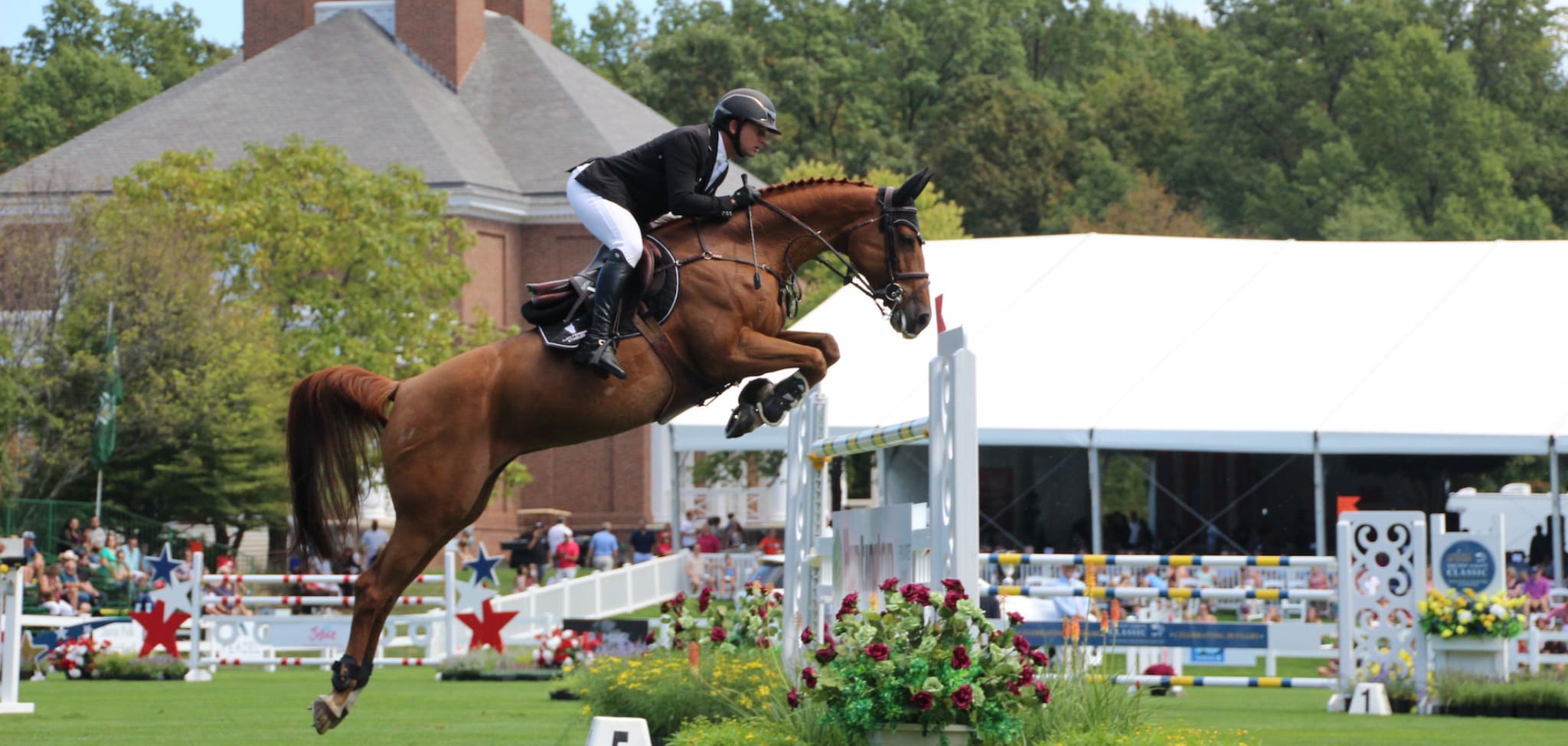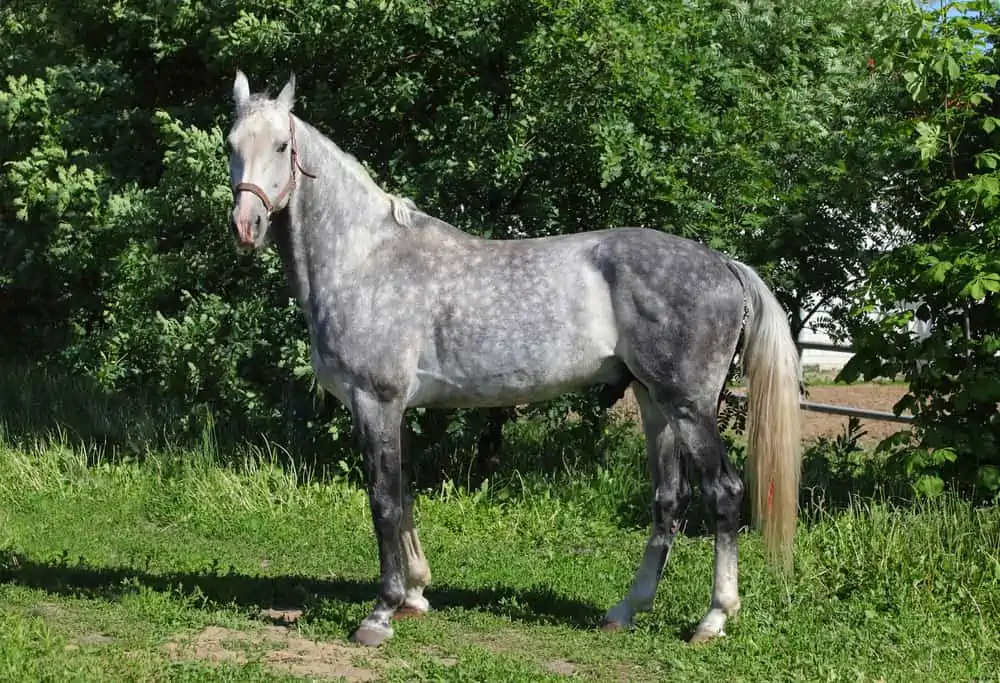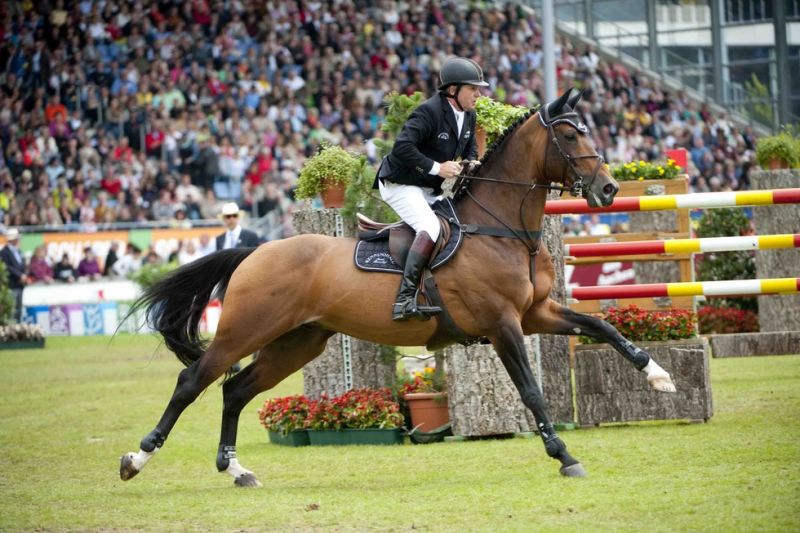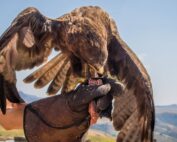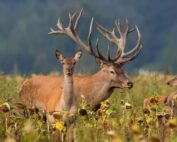Mastering the Art of Show Jumping: A Comprehensive Guide
Show jumping, the thrilling equestrian sport that combines grace, precision, and raw adrenaline, has captured the hearts of horse enthusiasts worldwide. Whether you’re a seasoned rider looking to fine-tune your skills or a curious newcomer eager to understand this captivating discipline, this comprehensive guide will take you on a journey through the fascinating world of show jumping.
I. Understanding the Basics of Show Jumping
Show jumping, at its core, is a test of agility, precision, and partnership between horse and rider. To excel, you must first grasp the fundamental principles that underpin this exhilarating sport.
Core Concepts:
At its essence, show jumping is a timed obstacle course where the horse and rider must navigate a series of jumps without knocking down any rails. This thrilling discipline demands a combination of horsemanship and athleticism. The rider must guide their horse through a predetermined route, clearing jumps of varying heights and widths while aiming for a flawless round, measured by the time taken to complete the course and any penalties incurred.
Show jumping courses are designed to challenge both horse and rider, with various types of jumps and combinations that test their skills. The rider’s goal is to guide their horse through the course as quickly as possible while incurring the fewest penalties. The partnership between horse and rider is essential, with clear communication and trust at its core.
Equipment Essentials:
Your journey begins with the right gear. Saddles, bridles, and protective equipment for both horse and rider are essential. Ensuring the proper fit and condition of your equipment is paramount for safety and performance. Saddles come in various styles, including close contact and forward seat, each with its advantages for show jumping. Bridles and bits should be selected based on your horse’s comfort and responsiveness. Safety gear like helmets, gloves, and body protectors are non-negotiable for riders.
Choosing the Right Hors
The horse is your teammate in show jumping. Learn how to select the ideal breed and characteristics to maximize your chances of success. Temperament, athleticism, and conformation all play crucial roles. Warmblood breeds like the Dutch Warmblood and Holsteiner are popular choices for show jumping due to their combination of strength and agility. However, other breeds, such as Thoroughbreds and Irish Sport Horses, can also excel in this sport. Evaluating a horse’s conformation, which includes factors like leg and hoof structure, is crucial to ensure soundness and longevity in show jumping.
For more information on selecting the right horse breed for your show jumping journey, refer to our article, “Exploring the World’s Best Horse Breeds.”
II. Training for Show Jumping Excellence
Effective training is the cornerstone of mastering show jumping. Just as a musician must practice scales, a show jumper, and their horse must hone their skills through consistent, targeted training.
Building a Strong Foundation: Start with the basics
Work on developing a strong partnership with your horse through groundwork, flatwork, and essential exercises like circles, transitions, and lateral movements. Groundwork establishes trust and respect between you and your horse. It’s also an opportunity to address any behavioral issues or obedience concerns. Flatwork, or riding on the flat without jumping, is fundamental to show jumping success. It improves your horse’s balance, responsiveness, and flexibility, setting the stage for jumping.
Flatwork also includes dressage exercises that enhance the horse’s obedience and suppleness. These exercises help improve the horse’s overall responsiveness to the rider’s aids and contribute to better performance in the jumping phase.
Developing Rider Skills: The rider’s role is equally important
Focus on your position, balance, and communication with your horse. A strong, effective rider is essential for clear communication and seamless execution in the arena. Positioning your body correctly in the saddle, with your heels down, shoulders back, and eyes up, allows you to maintain balance and control over your horse. Effective communication with your horse involves using aids such as leg pressure, rein contact, and your seat to convey your intentions.
Developing a secure and balanced seat is crucial in show jumping. It allows the rider to stay with the horse over jumps and maintain control during challenging courses. Riders must also understand how to use their body weight and position to influence the horse’s balance and trajectory over jumps.
Conditioning Your Horse:
Prepare your equine partner both physically and mentally for the rigors of show jumping. Conditioning programs should include regular exercise, a balanced diet, and mental stimulation to keep your horse sharp and focused. Conditioning ensures your horse is physically fit to perform at its best. This involves a combination of regular riding, lunging, and even cross-training activities like hill work or trail riding. Proper nutrition is critical; consult with a veterinarian or equine nutritionist to create a diet tailored to your horse’s needs. Mental stimulation, such as introducing new challenges or varying routines, keeps your horse engaged and eager to work.
Mental conditioning is equally vital for horses. Show jumpers must become accustomed to the sights and sounds of competition venues, which can be daunting for some horses. Gradual exposure to different environments and experiences helps horses adapt and remain focused during competitions.
III. Navigating the Show Jumping Course
Each show jumping course is a unique puzzle. Understanding how they are designed and what to expect during your ride is essential to success.
Course Design and Layout:
Explore the intricacies of course design, including the placement of jumps, combinations, and related challenges. Understand how the course flows and where potential pitfalls may lie. Show jumping courses are designed by course designers who strategically arrange obstacles to test both horse and rider. Courses often include verticals (single, narrow jumps), oxers (wider jumps with two elements), combinations (series of two or more jumps in quick succession), and related distances (the distance between two jumps). The course’s flow and technicality can vary, with some requiring tight turns and others emphasizing speed.
Course designers use a combination of technical and artistic skills to create challenging yet fair courses. They must consider the level of competition, the skill of the riders and horses, and the arena’s size and layout when designing a course. Show jumpers must analyze each course carefully and plan their strategies accordingly. The ability to quickly assess the course and make decisions about stride length, pace, and approaches to jumps is critical to success.
Scoring and Penalties: In show jumping, precision is key
Learn how scoring works, including time faults, refusals, and knockdowns. Avoiding penalties is crucial to a winning performance. Show jumping scoring is based on a combination of factors. The primary goal is to complete the course within the allowed time, usually around 90 seconds for a standard course. Time faults are incurred for exceeding this time limit, typically one penalty point for each second over. Refusals occur when a horse stops before a jump or runs out to the side; these result in penalty points. Knocking down rails or fences also adds penalty points, typically four points for each rail lowered. The rider with the fewest penalties wins.
Scoring systems can vary by competition level, with more advanced competitions using stricter scoring to differentiate between top performers. Additionally, some competitions may have jump-offs, where riders with the same score complete an additional, shorter course to determine the winner. Understanding the scoring system is essential for riders to strategize their rounds effectively.
Strategies for Success: Different jumps and combinations require different strategies
Dive into the techniques and tactics needed to tackle oxers, verticals, water jumps, and tight combinations with confidence and finesse. Strategies for success vary based on the type of jump and the horse’s strengths and weaknesses. For verticals, maintaining a straight approach and allowing your horse to bascule (arch its body over the jump) is crucial. Oxers require a bit more power and impulsion to clear the wider spread. Water jumps demand confidence and control to prevent hesitation. When approaching combinations, focus on maintaining a steady rhythm and balance between the jumps.
Strategies for approaching combinations, often consisting of two or more jumps placed nearby, are particularly important. Riders must decide whether to add or leave out strides between jumps, depending on their horse’s stride length and the distance provided. Approaching combinations correctly helps maintain fluidity and reduces the risk of penalties.
IV. Preparing for Competition
The mental game is as crucial as the physical one in show jumping. To perform at your best, you need to prepare both yourself and your horse for the big day.
Mental Preparation: Showjumping demands mental fortitude
Explore strategies for managing pre-competition nerves and maintaining focus during your ride. Visualization, breathing exercises, and positive affirmations can be powerful tools. Pre-competition nerves are common in show jumping. Visualization involves mentally rehearsing your course, and visualizing each jump and your desired performance. Controlled breathing helps calm anxiety and maintain focus. Positive affirmations are statements you can repeat to boost confidence and mental resilience. Remember that every rider experiences nerves, and it’s a sign of your dedication to the sport.
Show Day Checklist:
Ensure you’re fully prepared on the day of the competition with a comprehensive checklist of essential items and considerations. From grooming to warm-up routines, every detail matters. A well-prepared show day begins with grooming your horse, ensuring it’s clean and presentable. Tack should be in pristine condition. Arrive at the competition venue with ample time to spare, allowing your horse to acclimate to the surroundings. Warm-up is critical; follow a routine that suits your horse, including flatwork and jumping practice to establish a good rhythm and focus.
V. The Show Jumping Circuit
Show jumping offers a range of competition levels, from local events to prestigious international tournaments. Explore the various aspects of participating in the show jumping circuit.
Local Shows vs. International Competitions: Understand the differences between local shows and international events
Consider your goals and the level of competition that aligns with your aspirations. Local shows provide an excellent starting point for beginners and those looking to gain experience. These events are typically smaller in scale and offer lower jumps. As you progress and gain confidence, you can consider moving up to regional and national competitions, which feature higher fences and stiffer competition. International competitions, such as the Olympics or the FEI World Equestrian Games, represent the pinnacle of show jumping. These events attract top riders and horses from around the world and require an exceptional level of skill and dedication.
Riders must carefully plan their competition schedule based on their goals and the level of their horses’ development. Competing at local shows allows riders and horses to gain experience, improve their skills, and build confidence before venturing into more challenging competitions. The choice of competitions also depends on the rider’s long-term objectives; some may aim for national championships, while others aspire to compete on the international stage.
Rising Stars and Notable Champions:
Delve into the inspiring stories of famous show jumping horses and riders who have left their mark on the sport. Learn from their journeys to the top and the dedication that got them there. The world of show jumping has seen many legendary horses and riders. From iconic partnerships like Beezie Madden and Authentic to the historic achievements of show jumping legends like Nick Skelton and Big Star, there is much to learn from these remarkable individuals. Their stories are filled with determination, hard work, and the deep bond between horse and rider that epitomizes show jumping.
For a closer look at some of the top contemporary riders who have made a significant impact on the sport, check out our article, “The Top 10 Famous Horse Riders of Today.”
Studying the careers of successful show jumpers provides valuable insights into training techniques, competition strategies, and the importance of perseverance. It also emphasizes the significance of the partnership between horse and rider, showcasing how trust and communication are the cornerstones of achievement in this sport.
VI. Embracing the Show Jumping Lifestyle
For many, show jumping is more than just a sport; it’s a way of life. Discover the dedication, commitment, and rewards of being part of the show-jumping community.
Show Jumping as a Lifestyle:
Explore the passion and camaraderie that defines the show-jumping community. From early mornings at the barn to the thrill of competition, this lifestyle offers a unique sense of fulfillment. Show jumping enthusiasts often find themselves deeply immersed in the equestrian world. This lifestyle includes daily visits to the barn, where riders develop strong bonds with their horses while engaging in various training activities. The equestrian community fosters a sense of belonging, where fellow riders share experiences, knowledge, and a mutual love for horses.
Participating in the show jumping community involves more than just competing; it includes caring for horses, supporting fellow riders, and appreciating the beauty of the sport. The sense of unity and shared passion among show jumpers creates a unique and enriching lifestyle.
VII. Exploring Career Opportunities
Show jumping opens doors to various career opportunities within the equestrian world. Whether you dream of becoming a professional rider, trainer, course designer, or something else entirely, this section provides insights into potential career paths.
Exploring Career Opportunities within the Equestrian World:
- Professional Rider: Pursuing a career as a professional show jumper allows you to compete at the highest levels and earn a living doing what you love. Success in this field requires dedication, talent, and a consistent track record of wins. Professional riders often balance their competition careers with training horses and coaching other riders to supplement their income.
- Trainer and Coach: If you have a deep understanding of show jumping and enjoy teaching, becoming a trainer or coach can be a fulfilling career. You’ll work with riders of all levels, from beginners to advanced competitors, helping them improve their skills and achieve their goals. Trainers and coaches must possess strong communication and teaching skills, as well as a comprehensive knowledge of training techniques.
- Course Designer: Course designers play a crucial role in the sport, creating challenging and fair courses for competitions. This career path requires a deep understanding of show jumping and the ability to design courses that test both horse and rider. Course designers must stay up-to-date with industry trends and adapt their designs to suit the changing dynamics of the sport.
- Stable Owner or Manager: Owning or managing a stable allows you to create a thriving equestrian business. This can include boarding, training, and selling horses, as well as hosting events and competitions. Stable owners and managers are responsible for the daily operations of the facility, including horse care, staff management, and financial oversight.
- Equine Veterinarian: For those interested in both horses and medicine, becoming an equine veterinarian is a rewarding career. Equine veterinarians diagnose and treat horses, ensuring their health and well-being. This profession requires extensive education and training in veterinary medicine, as well as specialized knowledge of equine anatomy and health.
- Equine Nutritionist: Specializing in equine nutrition involves creating balanced diets and nutrition plans for horses to optimize their health and performance. Equine nutritionists work closely with horse owners, trainers, and veterinarians to ensure that horses receive the proper nutrition for their specific needs. This career path often requires a degree in animal science or a related field.
VIII. Conclusion: Embarking on Your Show Jumping Journey
As you embark on your show jumping journey, remember that it’s not just about winning ribbons; it’s about the bond you build with your horse and the love for the sport. With dedication, perseverance, and a deep passion for horses, you’ll find that show jumping is not merely a destination but a lifelong journey.
Challenges and Triumphs:
Along your journey, you’ll encounter challenges and triumphs. There will be days when the jumps seem insurmountable, and others when you and your horse soar effortlessly over obstacles. Embrace both the highs and lows, for they are the building blocks of your growth as a rider. The challenges teach you resilience, patience, and the importance of perseverance, while the triumphs are a testament to your dedication and the bond you share with your horse.
The Unbreakable Bond:
Show jumping is unique in the way it forges an unbreakable bond between horse and rider. The hours spent training, the shared experiences at competitions, and the silent understanding between you and your horse create a connection like no other. Your horse becomes not just a teammate but a trusted friend and partner in this exhilarating journey.
Learning Never Ends:
In the world of show jumping, learning is a continuous process. From refining your riding technique to understanding your horse’s unique strengths and weaknesses, there’s always something new to discover. Seek guidance from experienced trainers and fellow riders, absorb their knowledge, and apply it to your own journey. Embrace opportunities for growth, whether through clinics, workshops, or simply watching top-level competitions to gain insights into the strategies of accomplished riders.
Community and Camaraderie:
The Show jumping community is a tight-knit and welcoming one. Whether you’re competing at local shows or international events, you’ll find a network of fellow riders who share your passion. The camaraderie among show jumpers is a source of inspiration and support. Cherish the friendships you make along the way, as they are an integral part of your journey.
IX. FAQ: Answers to Common Show Jumping Questions
Q1: What are the typical jump heights in show jumping?
- Show jumping courses feature varying jump heights, with international competitions often exceeding 5 feet (1.52 meters) and beginners starting at 18 inches (45 cm).
Q2: How does show jumping differ from other equestrian disciplines like dressage and eventing?
- Show jumping focuses on cleanly leaping over obstacles within a set time, while dressage emphasizes precise movements, and eventing combines dressage, cross-country, and show jumping.
Q3: Is horse ownership necessary for show jumping participation?
- No, you can lease a horse or join riding school programs to experience show jumping without owning a horse.
Q4: How can I get started in show jumping if I’m a beginner?
- Begin with riding lessons to learn the basics of horseback riding. As you progress, you can explore specialized show jumping training programs. Taking riding lessons at a reputable stable is the ideal way to start. These lessons will teach you the fundamentals of riding and introduce you to the world of show jumping.
Q5: What is the most important quality in a successful show jumper?
- While talent and athleticism are crucial, the partnership and communication between rider and horse are often the determining factors in success. The ability to communicate effectively with your horse, understand its needs, and work together as a team is paramount.
Explore these frequently asked questions to gain essential insights into the world of show jumping as you embark on your journey in this thrilling equestrian sport. For a broader understanding of various horseback riding styles, don’t miss our article, “The Ultimate Guide to Different Horseback Riding Styles.
With this comprehensive guide, you’re well on your way to mastering the art of show jumping and embarking on a thrilling and rewarding equestrian journey. Whether you aspire to compete at the highest levels or simply enjoy the beauty of the sport, show jumping has something to offer every horse lover.
RECENT POSTS
History of Baseball
History of Baseball: From Its Origins to Modern TimesBaseball is one of the most popular sports in the United States, with millions of fans tuning in to watch games each year. The sport has a [...]
Hunting Falconry
History of Hunting Falconry: An Overview of Falconry's Evolution and Significance Are you interested in learning about the ancient practice of hunting with trained birds of prey? Falconry has been practiced for thousands of [...]
Hunting Destinations in 2024
Hunting Destinations in 2024: Top Picks for Avid Hunters Are you looking for exciting hunting destinations to explore in 2024? Whether you're a seasoned hunter or just starting, there are plenty of options available [...]
History of hunting dogs
Explore the History and Significance of Hunting Dogs: A Comprehensive Guide If you're a hunting enthusiast, then you know the importance of having a reliable hunting dog by your side. Hunting dogs have been [...]
Hunting as a Hobby
Hunting as a Hobby: An Overview Hunting is a popular outdoor activity enjoyed by millions of people worldwide. While some hunt for food, others do it as a hobby. Hunting as a hobby can [...]

